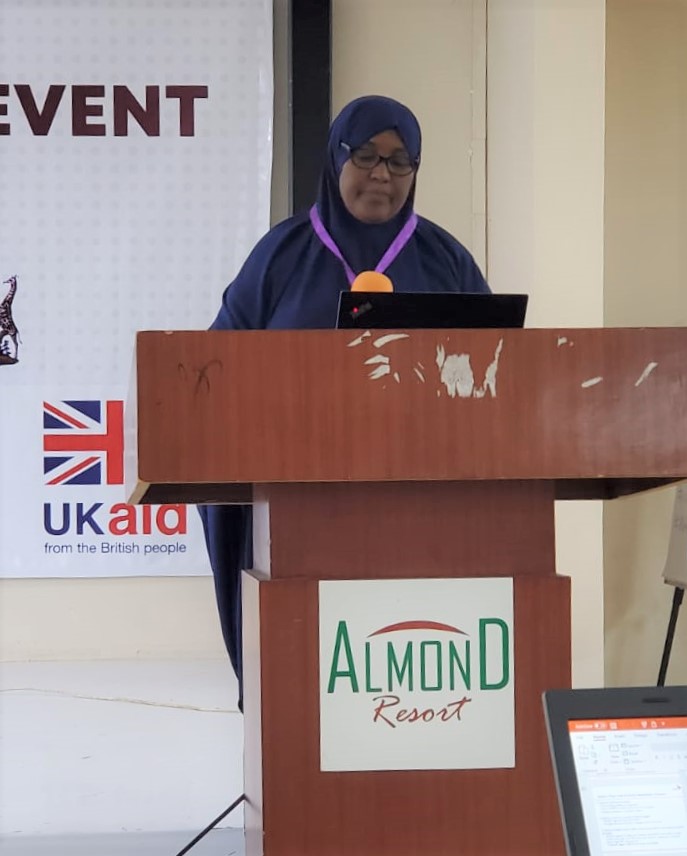
The primary goal of Maternal Death Surveillance and Response (MPDSR) is to eliminate preventable maternal and perinatal mortality by strategically using information to guide public health actions aimed at improving quality of care, mitigating negative health outcomes, and monitoring their impact. By investigating maternal and perinatal deaths, MPDSR inherently places value on the lives of mothers and babies, an important mechanism of accountability for families, communities, and the nation. Although most maternal deaths are preventable, in Kenya approximately over 3000 women die every year because of complications related to pregnancy and childbirth. The 2019 Housing and Populations Census Analytical report on Mortality reported a maternal mortality of 355 per 100,000 live births which is a slight reduction from 362 deaths per 100,000 live births reported by the Kenya Demographic and Health Survey 2014.
Garissa county is one of the 15 high burden counties of maternal mortality in Kenya contributing to 60 percent of all maternal deaths in Kenya. According to the 2019 Housing and Populations Census Analytical report on Mortality, maternal mortality for Garissa county is 641 per 100,000 live births which is higher than the national average. Due to the poor maternal and newborn indicators in the county, the Liverpool School of Tropical Medicine (LSTM), with funding from the Foreign Commonwealth Development Office (FCDO) has been supporting Garissa County to implement MPDSR activities since the year 2019.
In the month of June 2022, the County Government of Garissa in collaboration with LSTM organized a two-day knowledge management and learning (KML) event aimed at sharing best practices and lessons learnt in implementation of the MNH programme, with a view of enhancing transition and sustainability measures for adoption beyond funded programme phase. A key focus of the event was dissemination of best practices and lesons learnt in MPDSR.
Some of the key achievements the programme has had in Garissa County is the training of 60 health care workers in MPDSR. These health care providers were taken through the process of identifying maternal and perinatal deaths, identifying the underlying cause of death and priority actions that need to be undertaken to prevent future deaths. Health care workers who went through the training were followed up monthly by the technical team from LSTM to monitor the implementation of identified actions.
Programme results show that majority of maternal deaths and to a small extent perinatal deaths are reviewed, and the results uploaded onto the Kenya Health Information System (Figure 1). However, there is a challenge when it comes to implementing actions identified during these reviews. MDSR has been found to be effective in reducing maternal deaths when implemented as part of an intervention package. For example, facilitating the facility based MPDSR process by external experts, complemented by Emergency Obstetric and Newborn Care training. A similar package needs to be investigated in Garissa.
The proportion of perinatal death reviewed is still relatively low in Garissa County. During the Month of February 2020, the proportion of perinatal deaths reviewed and uploaded to the KHIS were more than 100% because of the backlog from the previous months. The reasons for the low proportion of perinatal deaths reviewed include: the number of perinatal deaths that occur are generally higher than maternal deaths and hence health care workers often feel overwhelmed, perinatal death audit meetings have not been happening regularly because of the low staffing levels which is tied to the high staff turnover, necessitating the need to re-orient new staff, and lack of finances such as data bundles by Health Records Information Officers (HRIOs).

“Our biggest challenge is implementing actions identified during the review meetings,” Fatma Iman, Garissa County Reproductive Health Coordinator
In these regards, the county teams noted that failure to effectively include MPDSR activities in the county workplans was a major contribution to this situation. They reiterated that they would continue lobbying for the inclusion of MPDSR activities in the county workplans and that some of the activities such as training and conducting county MPDSR committee meetings had been included in the annual workplan for the year 2022/2023.
Review of county specific data has shown that majority of maternal death in Garissa County are due to severe bleeding during and after childbirth, and complications related to hypertension during pregnancy and childbirth. Implementation of evidence based clinical guidelines based on WHO Post Partum Haemorrhage (PPH) recommendations such as the Kenya National Guidelines for Quality Obstetric and Perinatal Care, complemented by the availability of Heat Stable Carbetocin and Tranexemic acid at all levels of care is likely to make an impact on morbidity and mortality from PPH in Kenya.
This was reiterated by a health official from the county who said that “Obstetric heamorrhage and eclampsia are the leading causes of maternal death in this county. If we address post-partum heamorrhage and eclampsia, we are likely to address 60 percent of maternal deaths in this country...” Health Records Information Officer Garissa County.